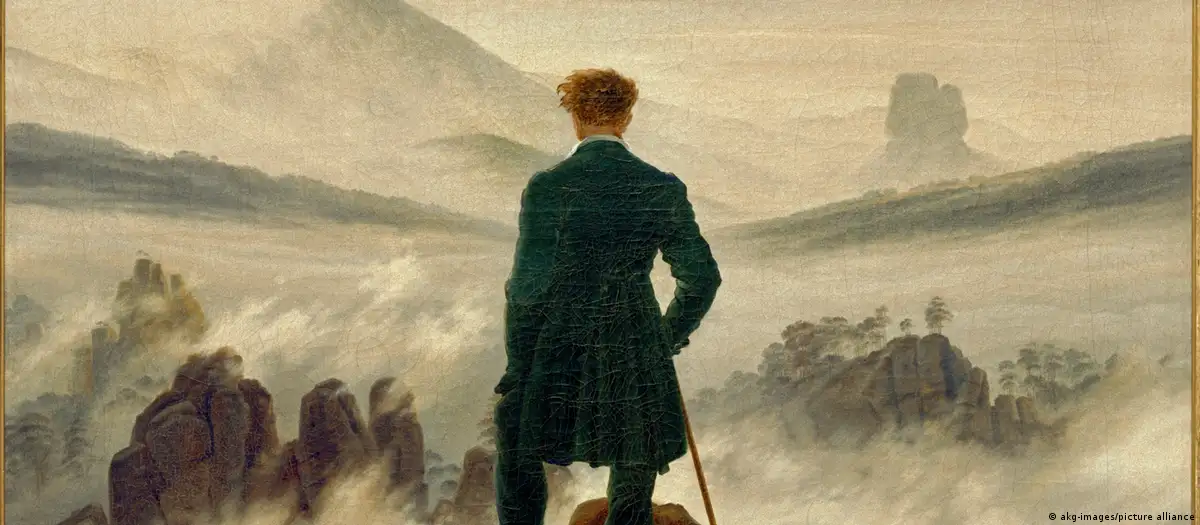Following a very public success in Hamburg, another blockbuster exhibition of works by Caspar David Friedrich is now opening in Berlin. We explain what makes him and his work so special.
This year marks the 250th anniversary of Caspar David Friedrich’s birth. Under the title “Caspar David Friedrich: Infinite Landscapes” a comprehensive exhibition celebrating the milestone anniversary of the artist’s birth can be seen at the Alte Nationalgalerie Berlin from Friday.
One of his most famous works shines in blue: a huge sky that stretches across almost the entire picture surface, darkens towards the horizon and finally merges into the night-black blue of the sea. At the very bottom of the picture, as if lost, stands a tiny human being. And this is Caspar David Friedrich’s “Monk by the Sea.”
Contemporaries were fascinated. It seemed “as if one’s eyelids had been cut away,” as Heinrich von Kleist (1777-1811) summarized.
Right next to it hangs the “Abbey in the Eichwald,” a gloomy view of a church ruin with a funeral procession, framed by bare trees that rise into the winter sky. In 1810, Caspar David Friedrich (1774-1840) achieved his artistic breakthrough in Berlin with these two paintings. The two works, bought by Prussian King Wilhelm III right after they were painted, are highlights of the new blockbuster exhibition.
With 61 paintings, including 15 from the Alte Nationalgalerie’s own collection, as well as 54 drawings, mostly from the Berlin Kupferstichkabinett, the exhibition provides a comprehensive impression of Friedrich’s work.
Germany is celebrating Caspar David Friedrich’s 250th anniversary throughout 2024 with a variety of events and exhibitions.
The Hamburger Kunsthalle opened its exhibition dedicated to the Romantic painter in December 2023, and the anniversary year officially started on January 20 at St. Nicholas’ Cathedral in Greifswald, where Friedrich was baptized.
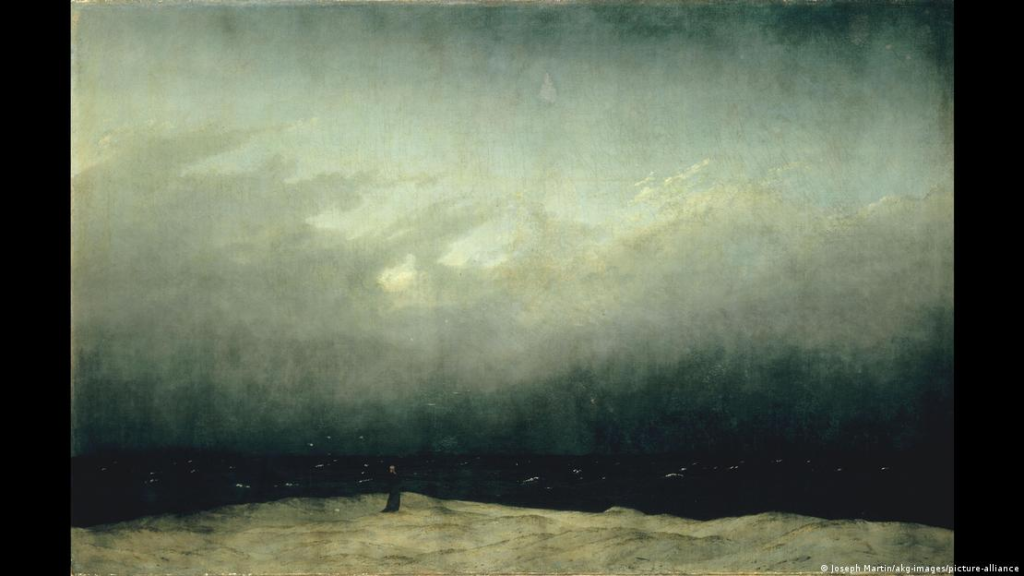
Nationally valuable cultural asset
The legacy of the painter was already making headlines ahead of the official celebrations, when one of his sketchbooks sold for €1.8 million (nearly $2 million) at auction in Berlin at the end of November.
Shortly before the sale, Berlin’s Senate Department for Culture initiated proceedings to have Friedrich’s work entered in the Berlin state register of nationally valuable cultural assets. This stopped buyers outside of Germany taking the sketchbook out of the country — at least until after the conclusion of those proceedings. Even then, it would only be possible to export the sketchbook if it fails to meet criteria deeming it a valuable cultural asset.
A look at the item’s provenance, however, shows that it is indeed a truly unique treasure.
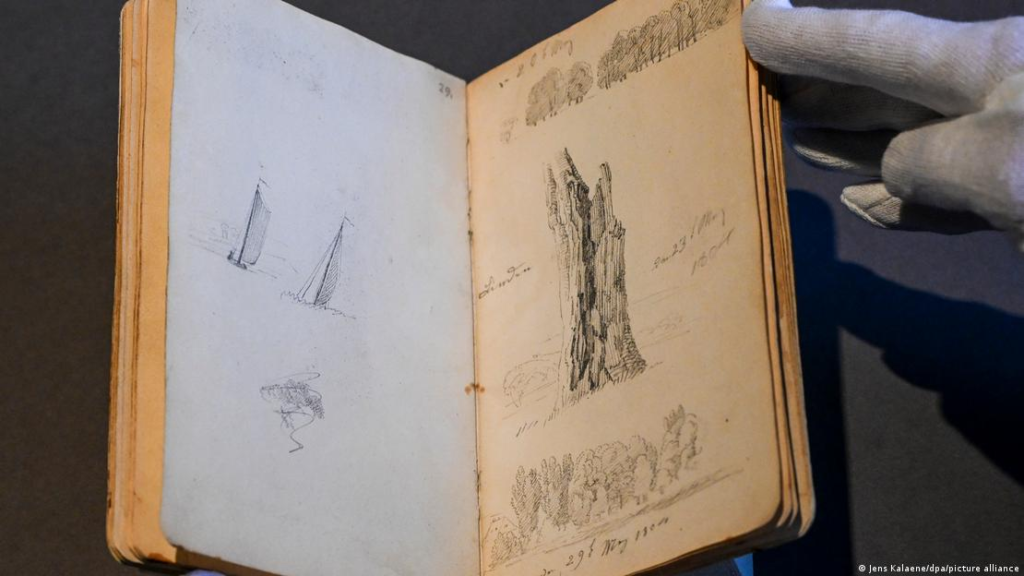
The “Karlsruhe Sketchbook,” as it is known, had been in the possession of the Kersting family for over 200 years. Georg Friedrich Kersting, a notable German Romantic painter in his own right, was a close friend of Caspar David Friedrich — who was born in Greifswald, now in the state of Mecklenburg-Western Pomerania, on September 5, 1774.
In his recently published book on Caspar David Friedrich, “Zauber der Stille” (Magic of Silence), German author Florian Illies writes that the artist’s contemporaries reported Kersting helping his friend with the depictions of figures in his paintings. Why?
Illies writes that Friedrich was considered a less-than-talented portraitist, for which he was even ridiculed during his time at the art academy in Copenhagen.
Is that the reason the figures in Friedrich’s paintings are usually seen from behind?
Strokes of fate
Caspar David Friedrich was the sixth child of Greifswald soap boiler and chandler Adolf Gottlieb Friedrich and his wife, Sophie Dorothea. She died in 1781, and one of his sisters died a year later.
Especially traumatic was the 1787 death of his younger brother Johann Christopher. There are conflicting stories of what happened, with some accounts saying the younger boy drowned while trying to save Caspar David, who had broken through ice while skating. Of the painter’s nine siblings, only five survived to adulthood.
In 1790, Friedrich began his studies under Greifswald University architecture and drawing teacher Johann Gottfried Quistorp, who gave him particular encouragement. Friedrich continued his artistic studies at the art academy in Copenhagen. From 1798, Friedrich lived and worked in Dresden, where he died on May 7, 1840.

Admired by many — but not Goethe
“Mystic with a paintbrush” is how Swedish poet Per Daniel Amadeus Atterbom described Caspar David Friedrich. The Romantic painter gained the admiration of his colleagues during his lifetime.
There was one notable exception, however: Johann Wolfgang von Goethe did not know what to make of Friedrich’s paintings. He derided them as “New German, religiously patriotic.” The poet is even said to have smashed one of the artist’s paintings on the edge of a table because he didn’t like it.
In 1794, Friedrich attended the art academy in Copenhagen, where he first encountered the nature mysticism that would so strongly influence his artwork. His first oil painting was provocative: the work “Cross in the Mountains” from 1807/1808 deals with the relationship of nature and God.
From then on, Friedrich’s work was no longer the Enlightenment’s window on the world, but a window to the soul, in the spirit of Romanticism. “Cross in the Mountains” caused a stir because in it, the painter gave equal space to both the church and nature.

A patriot and eccentric
Friedrich was a reclusive eccentric who only left his house in Dresden for long walks after dusk. On January 21, 1818, he married 25-year-old Caroline Bommer — at 6 o’clock in the morning.
He was unsettled by the military campaigns of Napoleon and the presence of French troops because they threatened him and his homeland. By 1806, Napoleon had occupied the majority of German territory.
That sparked nationalist sentiments in Friedrich. The artist dreamed of the ideal of a united Germany and had equal reverence for both the Christian and the Germanic. His paintings often feature figures wearing traditional German costumes, a subtle expression of patriotism.
Invented landscapes
Though Friedrich’s brush and pencil faithfully captured each tree, cliff, mountain or unfurled sail, in his works he freely reassembled those individually observed elements. Nature was an inspiration for him, not a template.
He combined his impressions into invented landscapes from his own imagination, such as “The Sea of Ice.” The apocalyptic painting turns the frozen Elbe River into a wide sea, with a shipwreck crushed between slabs of thick ice, ominously piled high in the center of the image — a scene never witnessed by Friedrich, only imagined by him.
Until his death in 1820, he lived just a stone’s throw from the Elbe River. His house, at An der Elbe 33 in Dresden, was where he hosted future Russian Czar Nicholas I, who bought several of his paintings.
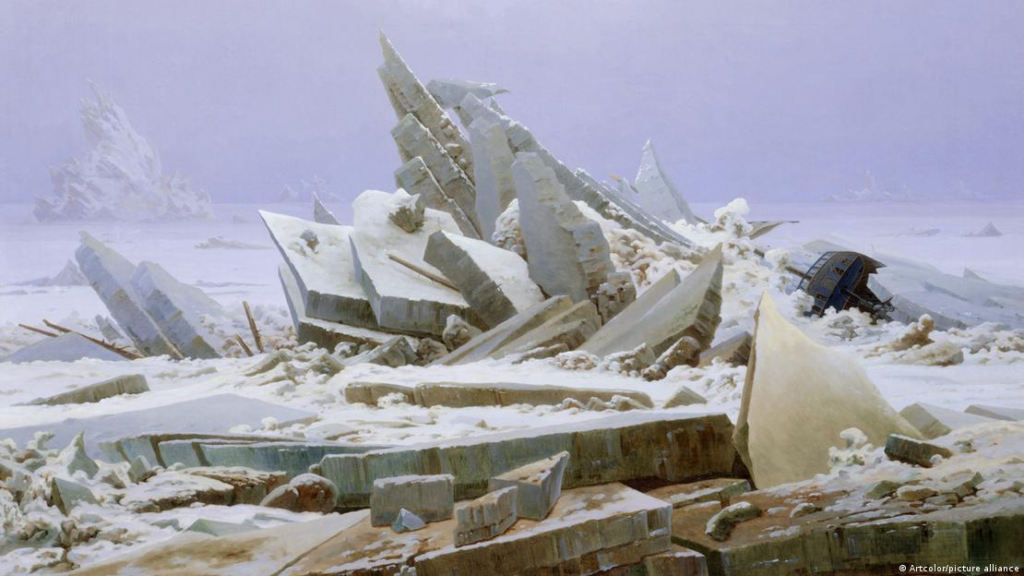
Enlightenment rationale gives way to emotion of Romanticism
While the Enlightenment emphasized reason and a rational understanding of the world, the Romantic period that followed was marked by emotion and sensitivity. Subjective moods were given prominence, which can be seen in the art of Caspar David Friedrich.
Friedrich responded to the strict compositions of the Enlightenment with disquiet and emotion: jagged mountain landscapes, morning mist, gloomy layers of cloud that sometimes threaten to swallow people up.
One of his major works is “Monk by the Sea,” which he began in 1808. It’s considered one of his most unconventional works, as there is no sense of spatial perspective; sea and sky merge. In the foreground, a small and reverent man stands with his back turned to the viewer — thus acting as a proxy and a figure of identification. Infinity and the enormity of the universe are the themes of the painting.
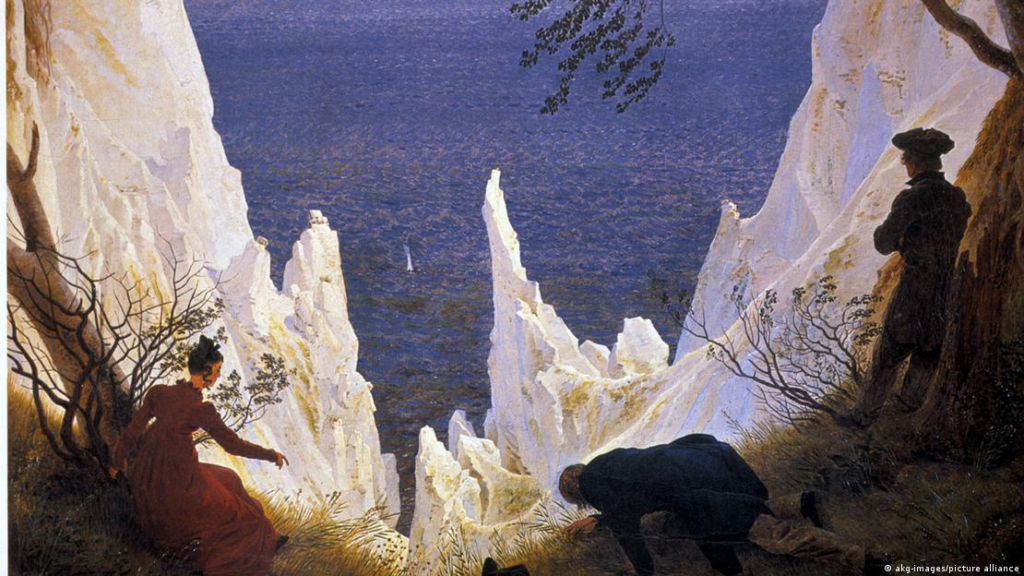
Rügen’s famous chalk cliffs
“Chalk Cliffs on Rügen” is considered one of Friedrich’s most beautiful paintings, and it’s among the most famous. He created it during his honeymoon in 1818. As if through a window, a motif frequently used by the painter, the view opens onto the Baltic Sea and a bright sky in the distance. The eye follows sailing ships gliding toward the horizon.
A number of works by Friedrich have been lost over the years. On October 10, 1901, for instance, his birthplace at Lange Strasse 28 in Greifswald burned down. Some of the paintings kept there were saved, but well-meaning relatives painted over them, thus destroying those that survived.
Several works by Friedrich were also among the art treasures lost during the Allied bombing raids on Dresden during World War II.
Today, the majority of the remaining pieces are in the collections of museums in Hamburg, Dresden and Berlin.
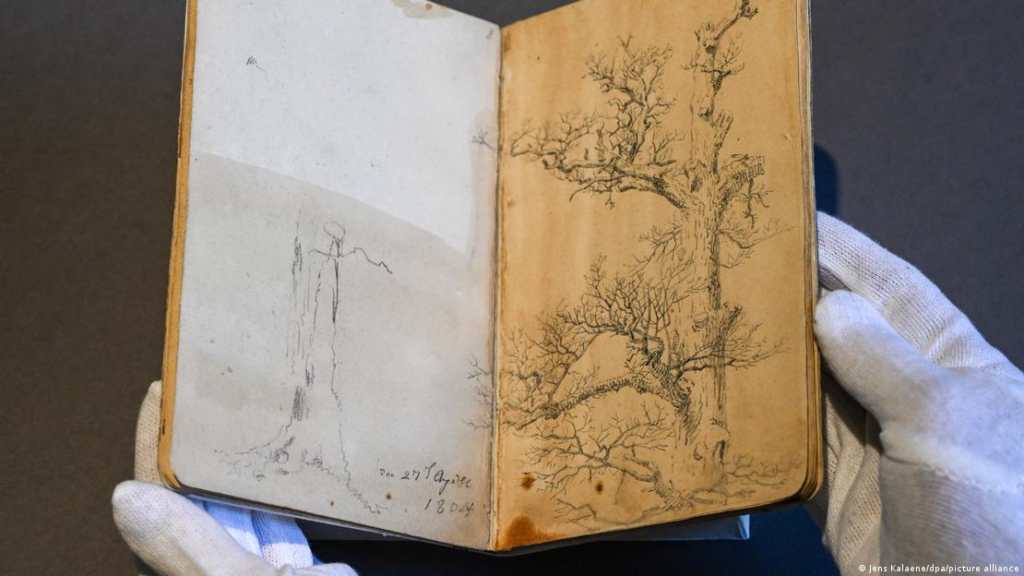
20th century brings renewed popularity
Friedrich died in poverty on May 7, 1840, his style of art no longer in vogue. New aesthetic movements had superseded Romanticism. Naturalism and Impressionism overtook Friedrich, leaving him behind.
His work had begun to lose its prestige by the 1820s, as the Dusseldorf School of painting became fashionable in Germany.
The rediscovery of his art began in 1906 with a small exhibition in Berlin that presented paintings and sculptures from the period of 1775 to 1875, and included 32 works by Friedrich.
That launched a phase of popularity that continues to this day. Friedrich never signed any of his paintings because he believed his name would never be forgotten. So far, he’s been right.
Source: Dw
